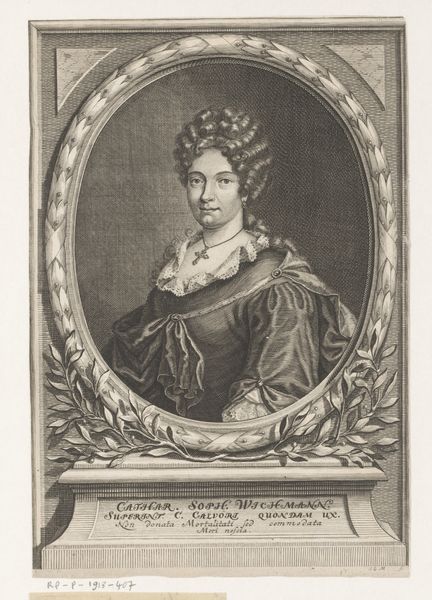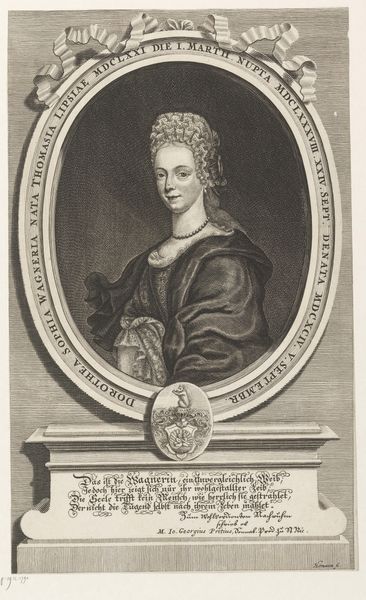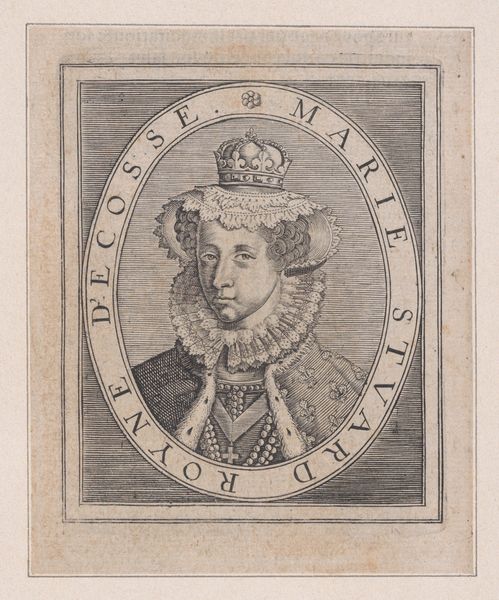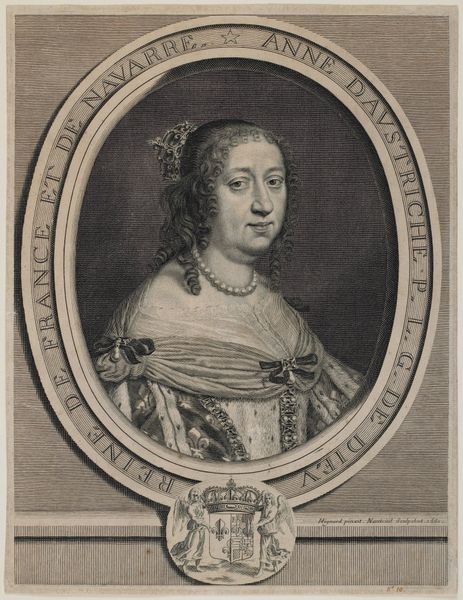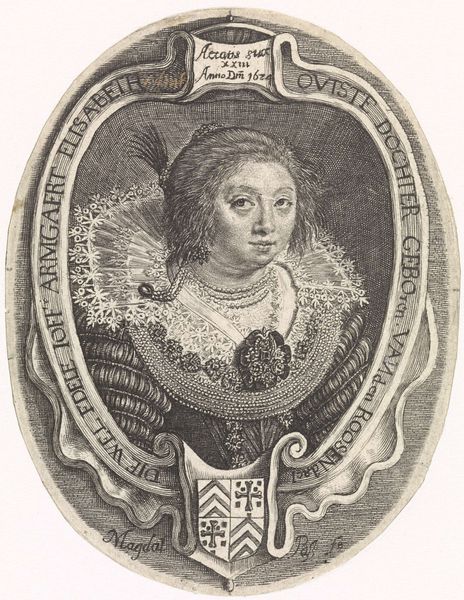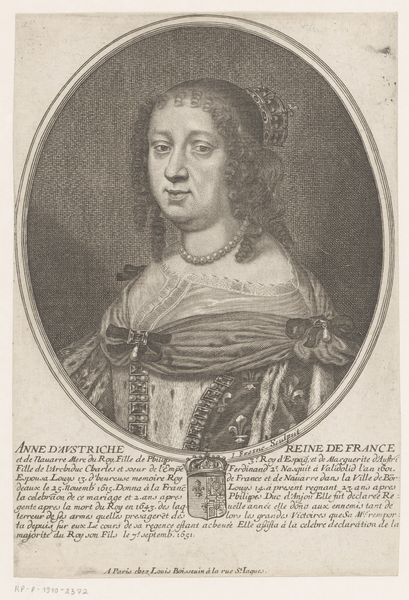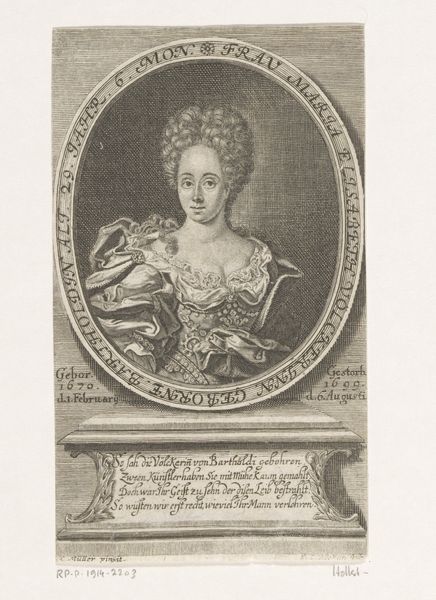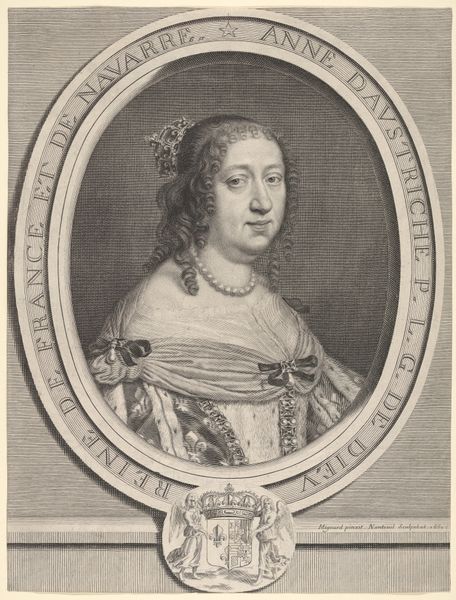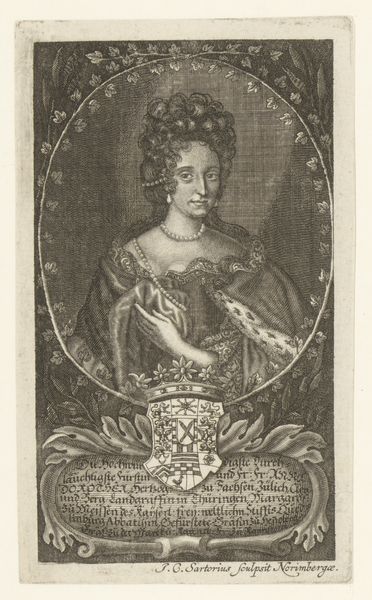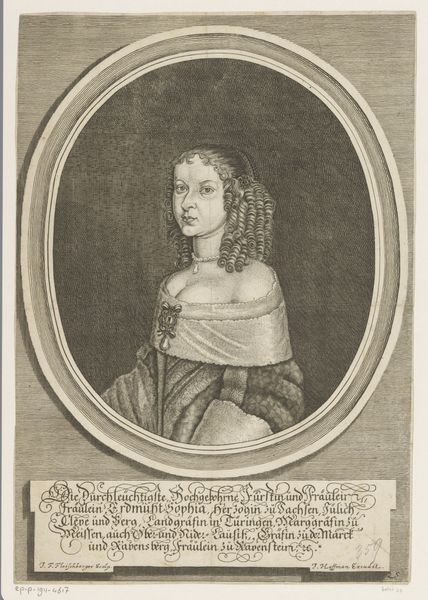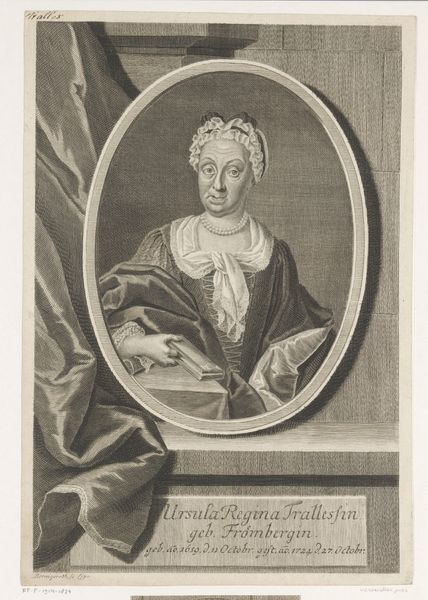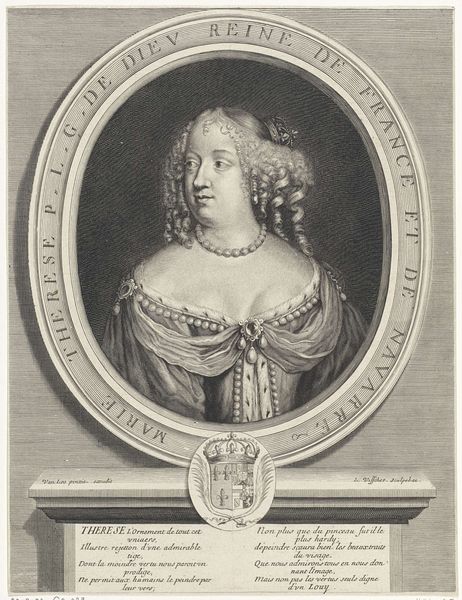
print, engraving
#
portrait
# print
#
mannerism
#
history-painting
#
engraving
Dimensions: height 129 mm, width 79 mm
Copyright: Rijks Museum: Open Domain
Curator: Looking at this print, its fine lines give it an immediate sense of gravity. Let’s discuss this piece, an engraving dating between 1583 and 1649 titled "Portret van Agnes, gravin van Mansfeld," by an anonymous artist. What is your initial reaction? Editor: I'm immediately struck by the subject's direct gaze and the surrounding inscriptions; they seem to hold more weight than just identification. The lines, meticulously engraved, emphasize the layers of representation and status conveyed here. How was this printed, exactly? Curator: As an engraving, the image would have been painstakingly etched into a metal plate, then inked and pressed onto paper. Consider the labor and materials involved; this print serves not only as a portrait, but also as a commodity circulating images of power. We're witnessing the mechanization of portraiture. Editor: Exactly, this mechanization distributes and reinforces her power through symbols. The oval frame reminds me of a mirror, reflecting a carefully constructed persona back at the viewer, literally framing her historical significance, further solidified by her family's coat of arms at the base. Curator: The production would likely involve skilled labor from workshop artisans. This also hints at the print’s function within a network of distribution. Were these commissioned, circulated among a specific elite, or made available more widely? The mode of distribution affects its meaning. Editor: Well, the deliberate framing devices, from the oval portraiture to the heraldry below, establish continuity across time. These aren't just visual elements, but codes solidifying dynasty, marriage, inheritance... Curator: Perhaps these were commemorative, part of a series circulated amongst connected families. This print collapses notions of fine art and commercial printing. Its value lay in disseminating the image as much as in artistic mastery. Editor: In essence, this image of Agnes becomes a mobile symbol, carrying her influence across geographical and temporal spaces. These layers reveal cultural memory, carefully printed into existence, to persist. Curator: Looking closely at this print invites questions of production, class, and the commodification of image. Its materiality connects to larger economic and social structures of its time. Editor: The artwork offers insights into the psychological and cultural weight attached to portraiture and how historical memory operates through carefully coded images. Curator: Absolutely, each lens enhances the image. Editor: Yes, and reminds us how visual and material cultures shape our understanding of history.
Comments
No comments
Be the first to comment and join the conversation on the ultimate creative platform.
